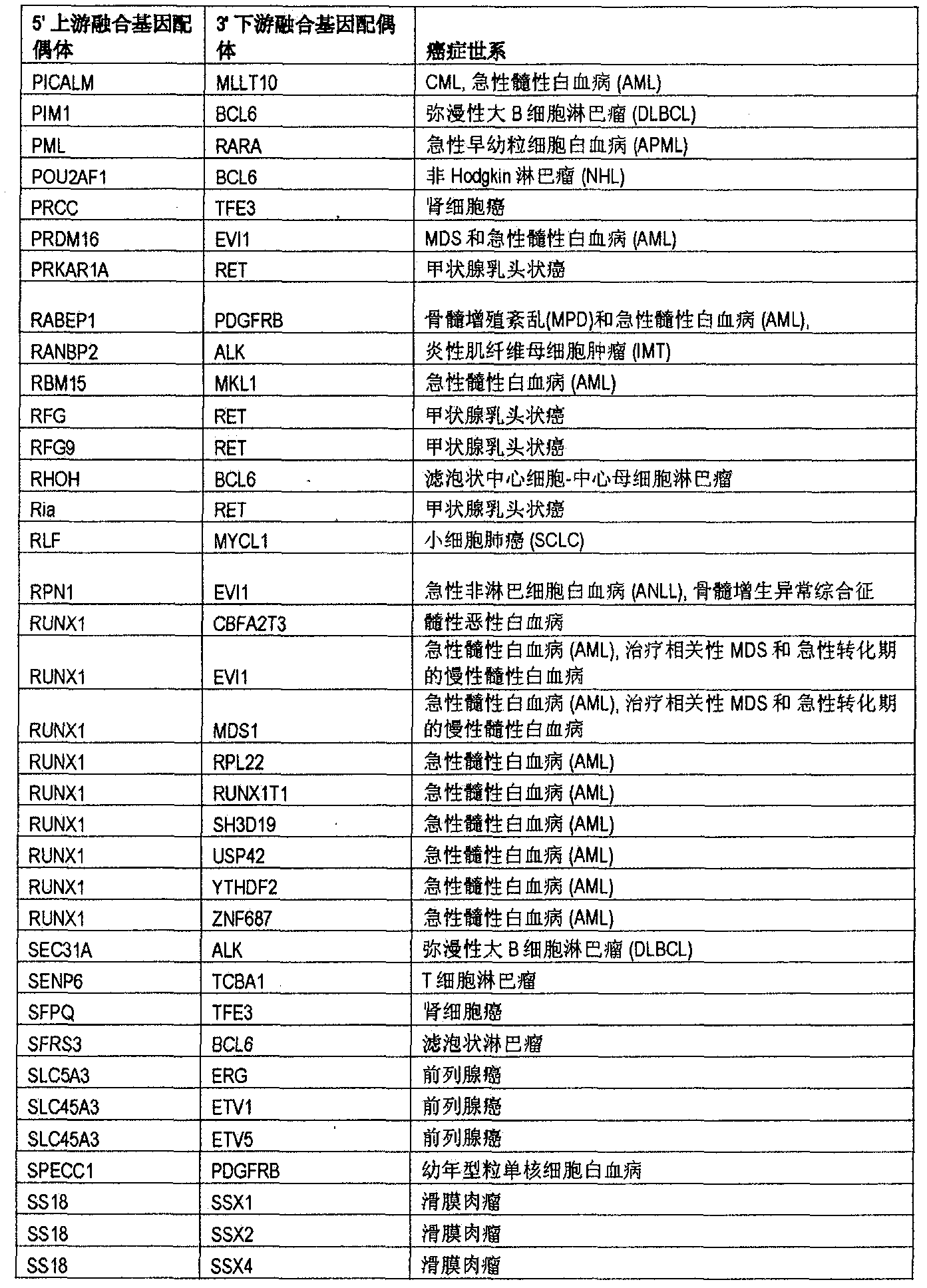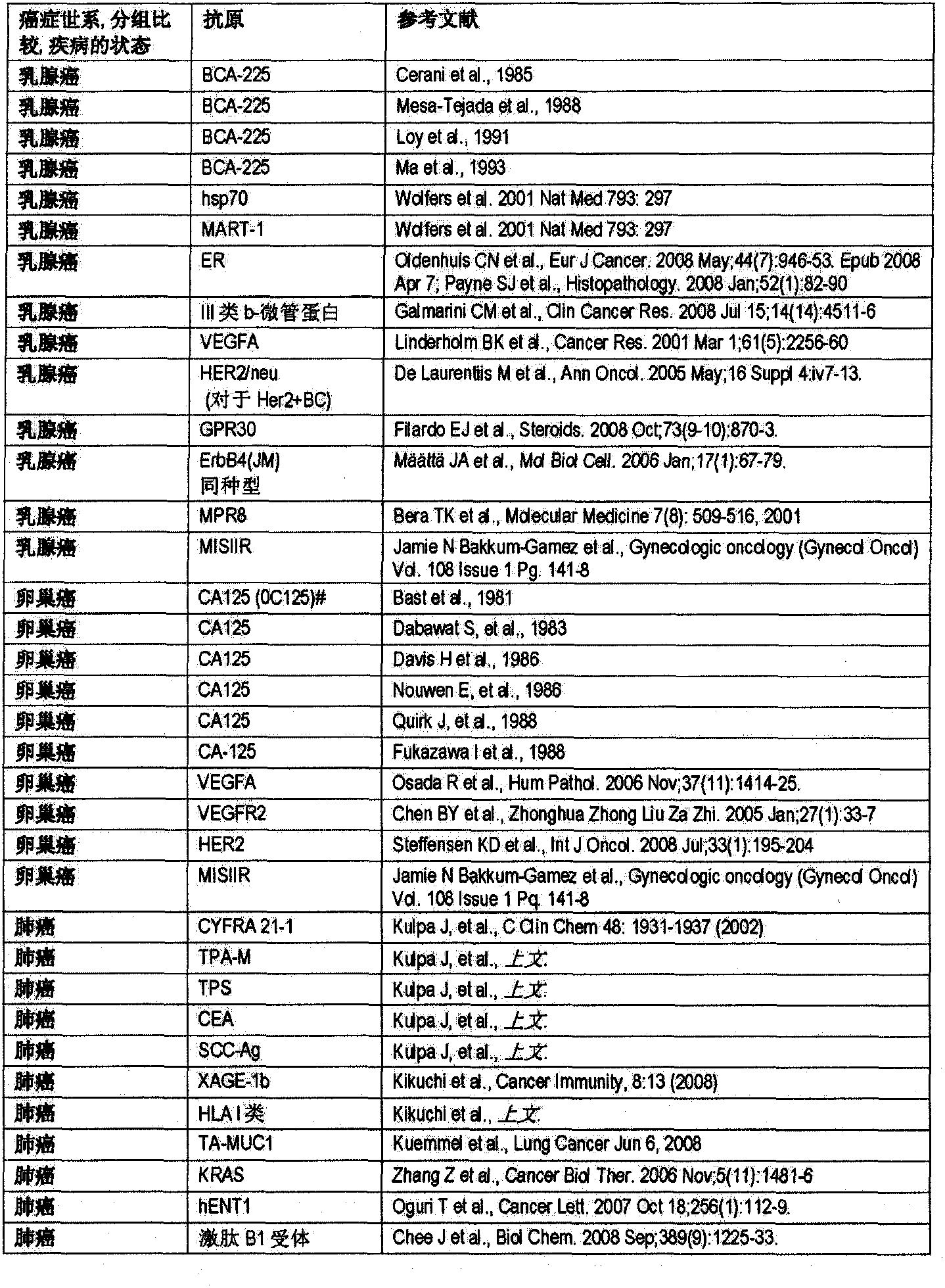Methods and systems for determining phenotypes using exosomes
A phenotypic, exosome-based technology, applied in 25 fields, can solve the problems of expensive, lack of specificity, lack of sensitivity of readout, etc.
- Summary
- Abstract
- Description
- Claims
- Application Information
AI Technical Summary
Problems solved by technology
Method used
Image
Examples
Embodiment 1
[0905] Example 1: Purification of exosomes from prostate cancer cell lines
[0906] Prostate cancer cell lines were cultured for 3-4 days in medium containing 20% FBS (fetal bovine serum) and 1% P / S / G. The cells were then pre-centrifuged at 400xg for 10 minutes at 4°C. Save the supernatant and centrifuge at 2000 x g for 20 min at 4 °C. The supernatant containing exosomes can be centrifuged using a Millipore Centricon Plus-70 (Catalog #UFC710008 Fisher).
[0907] The centrifuge ultrafiltration tubes were pre-washed with 30 ml of PBS at 1000 xg for 3 minutes at room temperature. Then, pour 15-70 ml of the pre-centrifuged cell culture supernatant into a Concentrate Cup and centrifuge in a Swing Bucket Adapter (Fisher #75-008-144) at room temperature at 1000xg for 30 minute.
[0908] Pour off fluid that passes through the Collection Cup. Using any other supernatant, bring the volume in the concentrate cup to 60ml. Centrifuge the concentration cup at 1000 xg for 30 minute...
Embodiment 2
[0911] Example 2: Purification of exosomes from VCaP and 22Rv1
[0912] Cone bodies from the prostate (VCaP) and 22Rv1, a human prostate cancer cell line derived from a human prostate cancer xenograft (CWR22R), were harvested by ultracentrifugation by first diluting the plasma with an equal volume of PBS (1 ml) Cancerous exosomes. Transfer the diluted fluid to a 15 ml Falcon centrifuge tube and centrifuge at 2000 x g for 30 min at 4 °C. The supernatant (-2ml) was transferred to an ultracentrifuge tube 5.0ml PA thin wall tube (Sorvall #03127) and centrifuged at 12000xg for 45 minutes at 4°C.
[0913] The supernatant (-2ml) was transferred to a new 5.0ml ultracentrifuge tube and filled to maximum volume with the addition of 2.5ml PBS, then centrifuged at 110000 xg for 90 minutes at 4°C. The supernatant was decanted without disturbing the pellet and the pellet was resuspended in 1 ml PBS. The tubes were filled to maximum volume with the addition of 4.5 ml PBS and centrifuged...
Embodiment 3
[0915] Example 3: Collection of plasma and purification of exosomes
[0916] Blood was collected by standard puncture into 7ml K2-EDTA tubes. Plasma was separated from blood cells by centrifuging the samples at 400 g for 10 minutes in a centrifuge (SORVALL Legend RT+ centrifuge) at 4°C. By careful pipetting, the supernatant (plasma) was transferred to a 15ml Falcon centrifuge tube. Plasma was centrifuged at 2000g for 20 minutes and the supernatant collected.
[0917] For storage, approximately 1 ml of plasma (supernatant) was aliquoted into cryovials, placed in dry ice to freeze them, and stored at -80°C. Before purifying exosomes, if samples were stored at -80 °C, cool down in a cold water bath for 5 min. The samples were mixed by hand by inversion so that undissolved material disappeared.
[0918] In the first precentrifugation, the plasma is diluted with an equal volume of PBS (for example, 2 ml of PBS is used to dilute approximately 2 ml of plasma). Transfer the dil...
PUM
| Property | Measurement | Unit |
|---|---|---|
| diameter | aaaaa | aaaaa |
| diameter | aaaaa | aaaaa |
| diameter | aaaaa | aaaaa |
Abstract
Description
Claims
Application Information
 Login to View More
Login to View More - R&D
- Intellectual Property
- Life Sciences
- Materials
- Tech Scout
- Unparalleled Data Quality
- Higher Quality Content
- 60% Fewer Hallucinations
Browse by: Latest US Patents, China's latest patents, Technical Efficacy Thesaurus, Application Domain, Technology Topic, Popular Technical Reports.
© 2025 PatSnap. All rights reserved.Legal|Privacy policy|Modern Slavery Act Transparency Statement|Sitemap|About US| Contact US: help@patsnap.com



